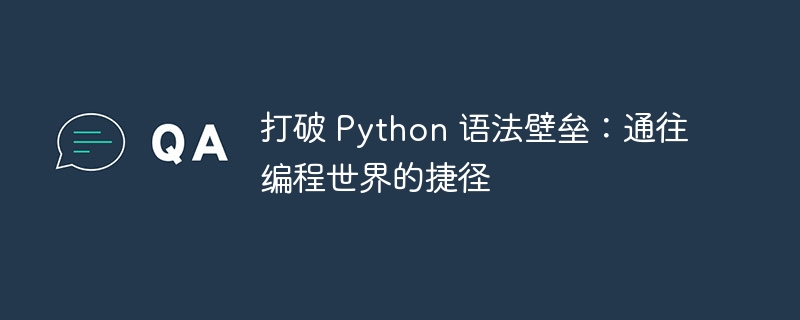

Python syntax: concise and efficient, easy to master
python The syntax is known for its simplicity and clarity. Compared with cumbersome programming languages, it is more intuitive and easy to understand. For example:
print("Hello World!")This code can simply output "Hello World!", and its syntax structure is clear and clear.
Variables and data types: storing and manipulating data
Variables are containers used to store data in Python, and their types determine the format and operation of the data. Common types include:
Integer (int): Integer value, such as 1, -20 Floating point number (float): Decimal value, such as 3.14, -12.5 String (str): Text data, such as "hello", "Python"
Control flow: guide program execution
Control flow statements allow us to control the flow of program execution. For example:
if statement: Execute a specific block of code based on conditions for loop: Traverse the elements in the sequence while loop:Repeatedly execute the code block until the condition is met
Function: Encapsulate code and improve reusability
A function is a block of code that encapsulates code and is used to perform a specific task. They can accept parameters, return results, and improve code reusability. For example:
def greet(name): return "Hello, " + name
Classes and Objects: Object-Oriented Programming
Python supports object-orientedprogramming, where classes define data and methods and objects are instances of classes. This helps organize complex code and improves code maintainability.
Input and output: interacting with the external world
Python provides methods to interact with the external world, such as:
input() function: Get input from the user print() function: Output data to the screen
Error handling: dealing with unexpected situations
The error handling mechanism allows us to handle unexpected errors gracefully when they occur. For example:
try: # 代码块可能出错 except Exception as e: # 捕获异常并处理
Summarize
Python is a programming language with simple syntax and easy to master, providing an ideal platform for novices to get started in the world of coding. This article introduces some of the most basic elements of Python syntax, including variables, data types, control flow, functions, classes, and objects, as well as input and output. By mastering these concepts, beginners can quickly build programs, solve problems, and start their programming journey.
The above is the detailed content of Breaking Python Syntax Barriers: A Shortcut to the World of Programming. For more information, please follow other related articles on the PHP Chinese website!